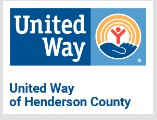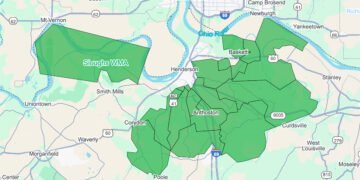The Henderson County K-Count, which occurred on Jan. 29, provided a snapshot of 98 unsheltered homeless people and 47 sheltered homeless people in the community. Both numbers are stark increases from what was observed locally in past K-Counts.
And organizers say the unsheltered count would have even been higher but seven men who normally stay outside were included in the sheltered total because they were staying at the Harbor House on the K-Count day after a White Flag Alert had been raised.
The K-Count, conducted every year in late January, is not meant to capture every homeless person in a community and is “a ‘point-in-time’ count of persons experiencing homelessness on a single night in Kentucky,” according to a Kentucky Housing Corporation website.
Melissa Collier, the case manager community outreach specialist for the Daniel Pitino Shelter Henderson, says the point-in-time count is much lower than the actual number of homeless. She has made contact with 210 homeless adults and children—living in cars, on the streets, couch-surfing and more—since she started her job in July.
Her total number of contacts, including those homeless numbers plus those at-risk of becoming homeless, since July is 361.
The numbers from the January K-Count are much bigger than past tallies. Last year, local volunteers counted 35 unsheltered homeless and 29 sheltered; in 2023, 17 unsheltered and 34 sheltered; in 2022, zero were counted as unsheltered and 26 were sheltered.
No K-Count was conducted in 2021 because of the Covid-19 pandemic, and in 2020, there were two unsheltered and 31 sheltered people counted.
Collier said one of the biggest barriers—if not the biggest—for the homeless population is the lack of affordable housing available to move into. She said in recent months she has assisted in getting eight people approved for housing assistance but none ultimately moved into an apartment.
“There’s nowhere to rent,” she said.
Additionally, some property owners charge anywhere from $25-$50 for an application fee. If one person applies to four places, that could end up $100-$200, not the type of extra cash homeless people have, she said.
“People don’t have that type of money,” Collier said.
There’s also another factor, though, which Collier believes is allowing a truer count of the homeless in the county to emerge. She said the higher number tallied in this year’s K-Count is a direct result of the work she and Jessica Lang, who conducts street outreach, are doing.
“We’ve made connections with the homeless where they have trust in us…and know that we care,” she said.
That trust was evident at the Jan. 29 K-Count luncheon that Collier hosted at the Henderson County Public Library. A variety of organizations were on hand to offer resources, and Collier said more unsheltered homeless people showed up and were counted than the total number tallied in last year’s unsheltered count. After the luncheon, volunteers spread out throughout the city and county to complete the K-Count.
The services provided by Collier equate to almost anything needed to get someone into permanent housing. She said some have commented that it’s a bit like hand-holding, and to that, she responds, “Sometimes that’s what it takes.”
The range of needs includes Medicaid, SNAP, job referrals, mental health/substance abuse referrals and doctor visits.
From October to July, she said she’s helped seven families obtain permanent housing. There were 11 adults and 13 children making up those families, she said.
It all comes down to building relationships, said Lang.
“A lot of them feel ashamed that they are homeless,” she said, adding their job is to build trust to help them break out of homelessness.
Some say that there’s a percentage of homeless people who say they prefer living on the streets. Collier hasn’t found that—at least not at a high percentage. She said of the 210 homeless people she’s helped, two have said they prefer living on the streets.
In the warm weather, many stay outside, sleeping in parks and cars; in cold weather, they find roofs to stay under—couch-surfing or abandoned houses or hallways of apartment complexes, she said.
Collier believes that many people in Henderson don’t understand the extent of homelessness in the community. She said it’s an “out of sight, out of mind” for many.
“If I don’t see it, then it doesn’t exist,” she said of the feelings of many.
But, on the other hand, Collier said those people and organizations that she and the homeless coalition work directly with have been very welcoming. An example has been those who work in the utility offices in local government. Collier said they’ve been very helpful in getting people squared away with utility bills so that they can get into a new residence.
There’s a host of reasons for somebody becoming homeless, and Collier said a common saying is that most people are two or three missed paychecks from falling into homelessness. Those reasons include losing a job, mental illness, no affordable housing available, evicted from an apartment and can’t get into a new one, falling behind on medical bills, drug use and domestic violence.
It’s a continuous job and one Collier said will be needed for a long time.
“You try to help people get on their feet and be successful for themselves, and you have compassion for people,” she said.






















